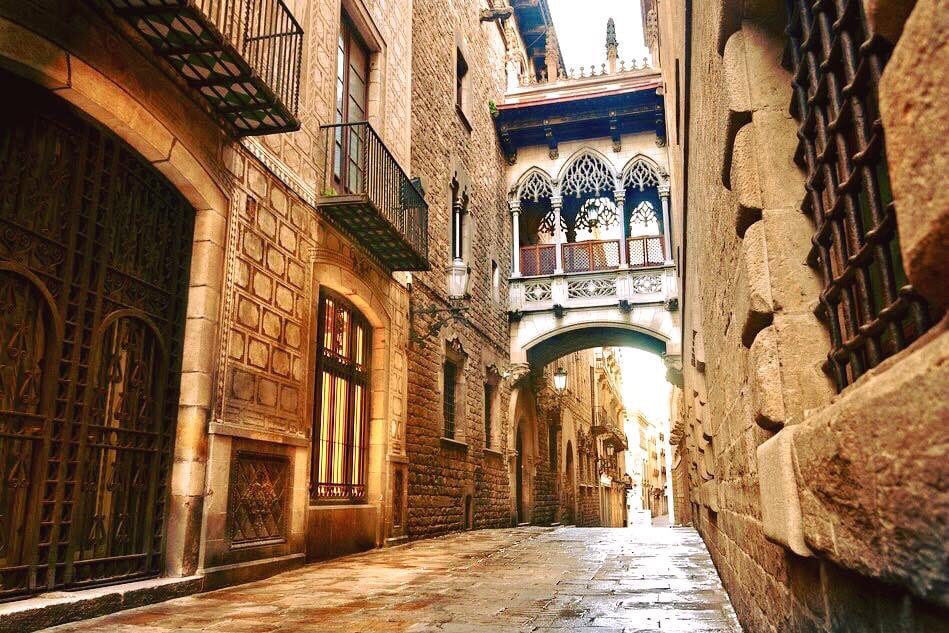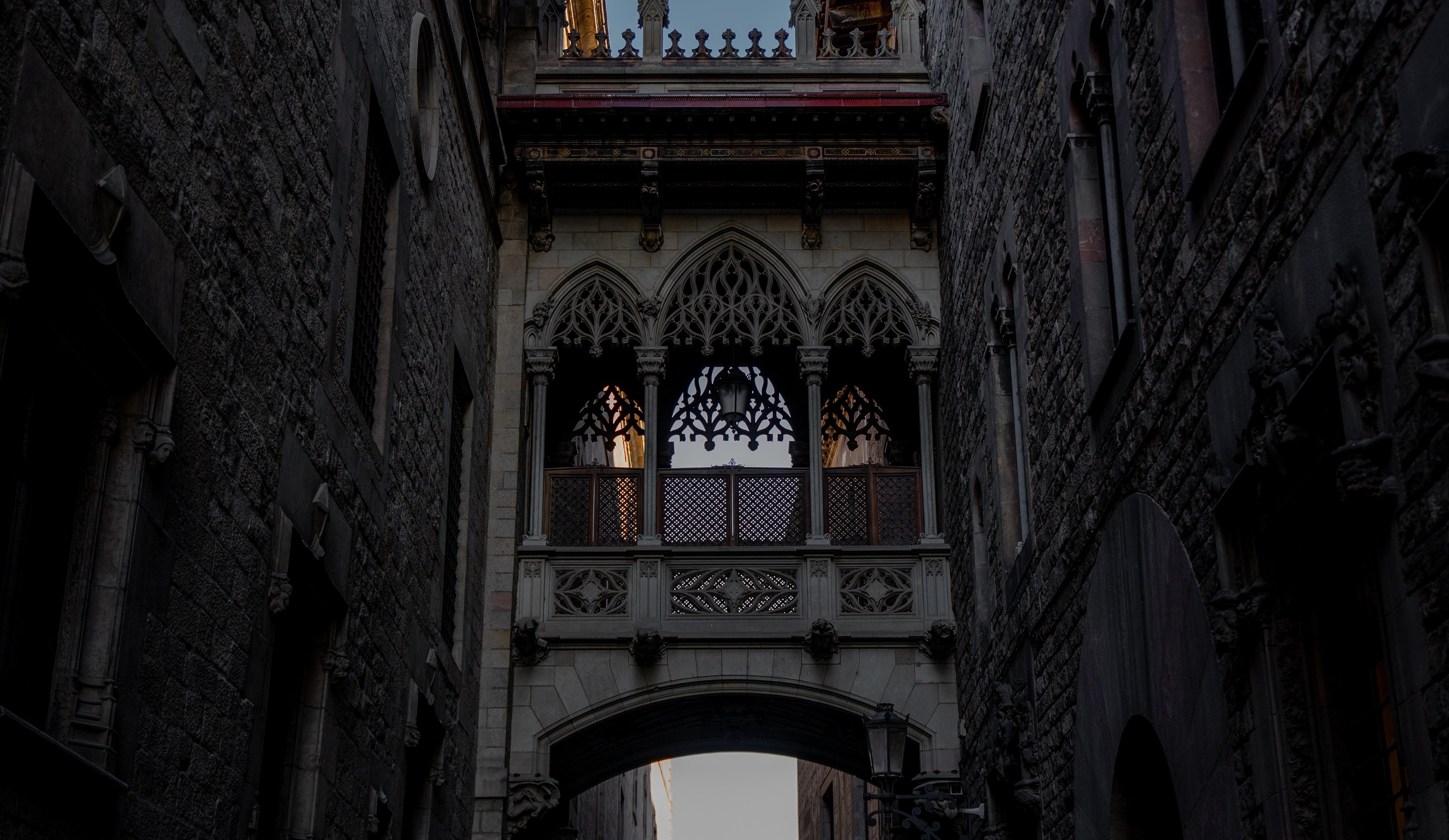Pont del Bisbe





Ask ThatchGPT
Suggest a local expert to plan my trip
Suggest an unique itinerary for my Barcelona trip
What foods do Barcelona locals eat
What are some true hidden gems in Barcelona
Help me brainstorm trip ideas for Barcelona
Help me plan a family-friendly trip to Barcelona
What people say
Victoria White
"Positioned in the hum of the Gothic Quarter, on the narrow street of Carrer del Bisbe, you will stumble upon this striking Neo-Gothic bridge, called Pont Del Bisbe. The ornate structure decorated with arched windows, gothic columns and intricate stone tracery was originally used to connect Casa dels Canonges to Palau de la Generalitat, allowing Catalonian presidents easy passage between the two buildings.
On first glance you would think that the bridge dates back to medieval times but interestingly it was only constructed in 1928 by the architect Joan Rubió i Bellver, who was the official architect of the province of Barcelona in the 1920’s.
Originally a pupil of Gaudí’s, Rubió i Bellver was also involved with projects such as La Sagrada Família and Casa Batlló. Similar to Gaudi, Rubió i Bellver was greatly influenced by medieval gothic design and in the lead up to Barcelona’s International Exposition in 1929, he drew up plans to knock down many of the modern buildings in the Gothic Quarter and to replace them in the Neo-Gothic style. Unfortunately for Rubió i Bellver, the Barcelona City Council didn’t agree with his vision and rejected his plans to construct any other buildings in Barrio Gotic.
This infuriated the architect and to spite the council he added the eerie skull and dagger motif, which can be seen on the underneath of the bridge and is said to curse anyone who gazes upon it. Other myths include the warning that if the dagger is ever removed from the skull the city of Barcelona will fall, however, if you walk backwards whilst staring at the skull it will grant you one wish. Urban legends aside, it’s a great little oddity to look out for when visiting! "
Read more in:
Lana Nguyen
"El Pont del Bisbe, commonly known as the Bishop’s Bridge, is one of the most photographed sights in Barcelona’s Gothic Quarter. The Bishop’s Bridge was built by Joan Rubió I Bellver in 1928 in a Neo-Gothic style to complement the rest of the neighborhood. He was an apprentice of Antoni Gaudí, and the bridge was built in preparation for the Barcelona International Exposition, which took place in 1929. It’s made of marble and decorated with tryptic carved windows, oil lanterns, and gargoyles that peer over and snoop at passersby. There is an interesting story about Joan, who built this bridge. It is said near the end of completion, he had a vision for the entire Gothic Quarter of Barcelona. His dream was to knock down many of the modern buildings that surround Barcelona Cathedral and then rebuild them in a Neo-Gothic style. Of course, the council wasn’t pleased about this and so rejected his plans. Joan Rubió i Bellver was even chastised for his ideas in local satire magazines! So, when finishing Pont Del Bisbe, he decided to carve a skull pierced with a dagger underneath as a curse… That’s right, if you walk under the archway of the Bishop’s Bridge and look up, you’ll see a skull and dagger motif under there!"
Read more in:
Josefina Ginevra
Available for hire
"Also known as the Bishop's Bridge, is an iconic Gothic-style bridge that connects two buildings in the Gothic Quarter of Barcelona. Its unique architecture and ornamental details make it a prominent landmark in the city. The bridge is famous for its elaborate design and decorative arch, which often attracts visitors to take photographs and admire its architectural beauty. "
Read more in:
Mentioned in these guides
About Pont del Bisbe
Get the inside scoop on Pont del Bisbe from local experts, travel creators, and tastemakers. Browse genuine trip notes, Pont del Bisbe reviews, photos, travel guides, and itineraries from real travelers and plan your trip with confidence.
Save this spot for later or start mapping out a new trip today
Try our AI Travel Assistant and get instant answers to any questions about your trip.
Ask ThatchGPT
.jpg)

